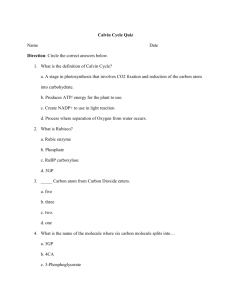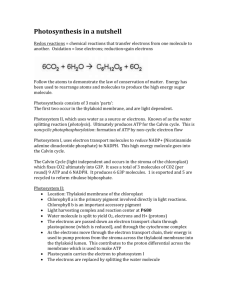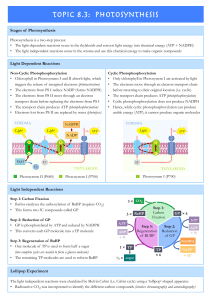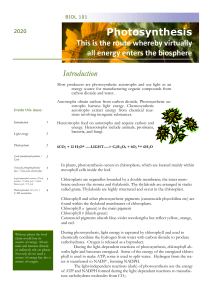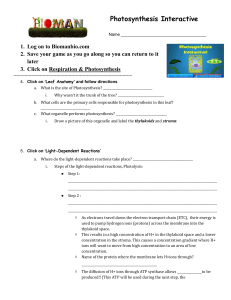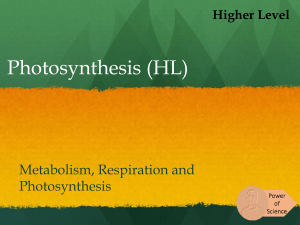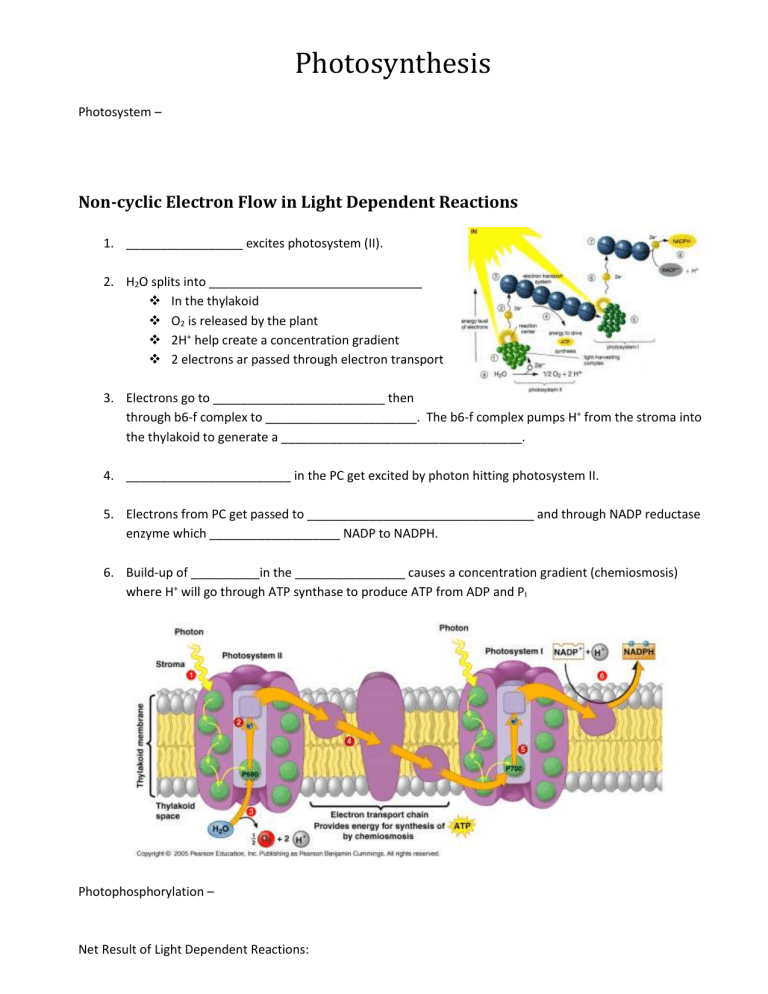
Photosynthesis Photosystem – Non-cyclic Electron Flow in Light Dependent Reactions 1. _________________ excites photosystem (II). 2. H2O splits into _______________________________ In the thylakoid O2 is released by the plant 2H+ help create a concentration gradient 2 electrons ar passed through electron transport 3. Electrons go to _________________________ then through b6-f complex to ______________________. The b6-f complex pumps H+ from the stroma into the thylakoid to generate a ___________________________________. 4. ________________________ in the PC get excited by photon hitting photosystem II. 5. Electrons from PC get passed to _________________________________ and through NADP reductase enzyme which ___________________ NADP to NADPH. 6. Build-up of __________in the ________________ causes a concentration gradient (chemiosmosis) where H+ will go through ATP synthase to produce ATP from ADP and PI Photophosphorylation – Net Result of Light Dependent Reactions: Cyclic Electron Flow Light independent reactions require _______________________________________ - therefore more ATP needs to be made than NADPH…. Cyclic photophosphorylation can occur to produce extra ATP. Electrons can flow in a cycle allowing for more ________________________________. Once electrons are accepted by Fd, they are cycled back _______________________________ and cause additional H+ to cross the membrane. With additional H+ on the thylakoid side of the membrane, ATP synthase makes more ATP. NADPH is not made because electrons were not passed to NADP reductase. The Calvin Cycle The Calvin Cycle Occurs in the ______________________ of the chloroplast Takes 3 CO2 and produces _________________________________________________________ No ___________________________ is required for the Calvin Cycle to take place and it is therefore called __________________________________________. Steps in the Calvin Cycle 1) Fixation of carbon dioxide 3CO2 combines with ribulose bisphosphate (RuBP) to make 2 3- phosphogylcerate molecules 2) Reduction of 3-phosphogylerate into glyceraldehyde-3-phosphate (G3P) uses ATP and NADPH product = G3P 3) Regeneration of RuBP from G3P Uses ATP The Fate of G3P Net Equation for Calvin Cycle


